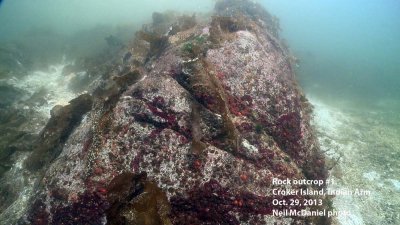Professor studies disease decimating local sea stars
From Alaska to Southern California, something is killing the West Coast’s sea stars – the ubiquitous, child-friendly favorite of tide-pool explorers everywhere – and nobody knows why.
Yet.
Benjamin Miner, as associate professor of Biology at Western Washington University, has received, along with his colleague Ian Hewson, a geneticist at Cornell University, a one-year research grant from the National Science Foundation to begin to explore the potential reasons for the region’s dramatic loss of sea stars due to what is known as Sea Star Wasting Disease.
“My part of this research involves going out into the field and surveying about 30 to 40 sites in Washington, bringing samples back to my lab and sending tissue on to Ian, so he can begin to examine the DNA of the sea stars, bacteria, and viruses in them,” Miner said.
Sea Star Wasting Disease can sweep into an area and within a week or two, turn healthy colonies of dozens of sea stars into dead zones where the only thing left are mats of bacterial ooze – the remains of the stars after the disease has run its course.
“You’ll start to see lesions – white, open sores – on the sea stars. Then they’ll begin losing their legs, and before too long they have been reduced to this white mat of goo,” he said.
Miner said the disease seems to affect 5 or 6 of the 20 or so local varieties of sea star, although varieties that live in deeper water or are rarer may also be affected.
Miner and Hewson will soon begin to seek answers to some of the basic questions about this epidemic. First and foremost, what is causing it? There is almost no published research on this topic, so they will be starting almost from scratch. Is it one disease or a “perfect storm” combination of illnesses? Can sick sea stars infect others by touch, or is it spread through the water column? Can it be passed to other sea stars of different species?
“We don’t have any of these answers yet, but hopefully within a year, we will,” Miner said.
Miner will be sampling both intertidal areas on foot and near-shore sites by diving. The sites are both in the Pacific Ocean and inside the Salish Sea, and he will compare the populations he finds there with historical records. Given the prevalence of the disease, if there are no sea stars in areas historically known to have robust populations, he can assume that the disease has swept through the area already. Other areas, he said, have seemed to remain untouched, with normal, healthy sea star populations. What about these areas is different from the areas that have been affected?
“It’s a fascinating question, and an important one,” Miner said. “Sea stars are ravenous eaters of shellfish like mussels. If there is no predation of mussels, their populations will explode, crowding out other species and dropping biodiversity. Mussels can take over an ecosystem, and sea stars are the check-and-balance that prevents that.”
Moreover, what worries Miner even more about the sudden onset of this disease is that it hasn’t done what sicknesses usually do: appear in one place then leapfrog its way into new areas. Sea Star Wasting Disease has arrived along virtually the entire North American West Coast almost simultaneously.
“The geographic scale of this disease outbreak is especially alarming and, frankly, almost unheard of,” he said.
Working alongside Miner during the project will be Biology undergraduate Warren Kohl (Black Diamond).
“Getting a chance to work on research like this as an undergrad is just a phenomenal opportunity,” said Kohl.
For more information on the grant or his Sea Star Wasting Disease research, contact Ben Miner at (360) 650-3640 or Benjamin.miner@wwu.edu.
